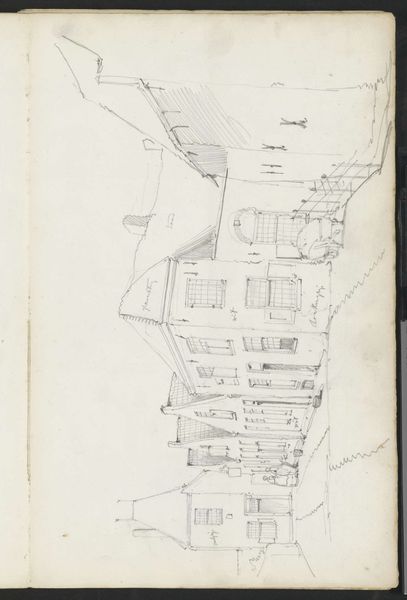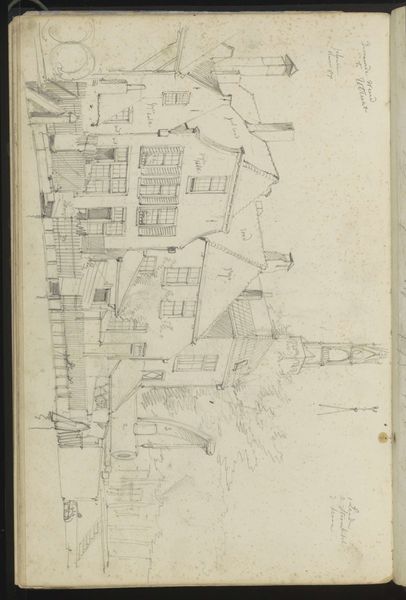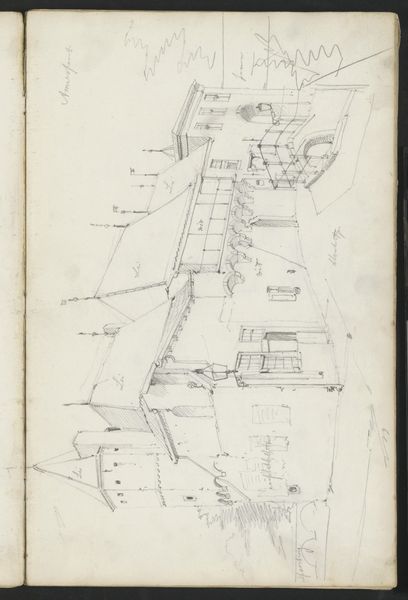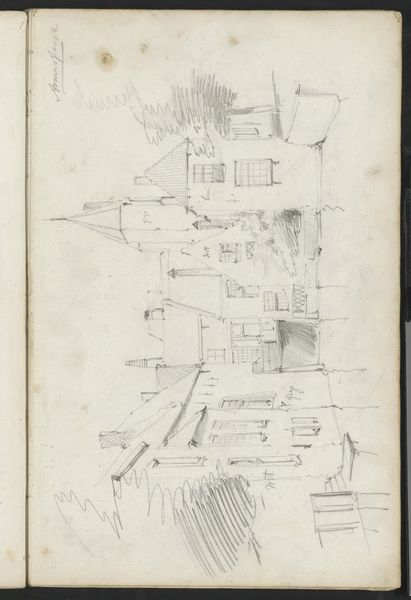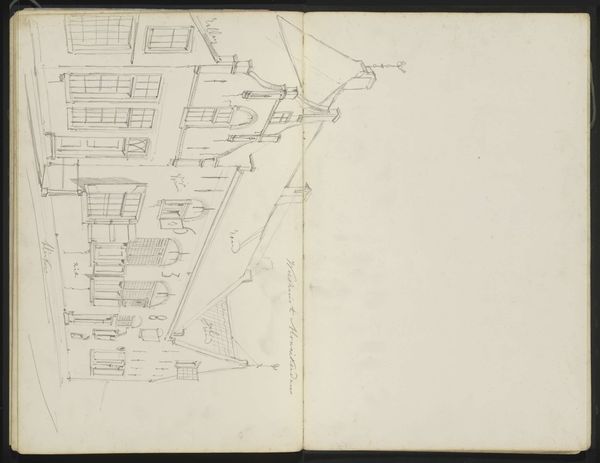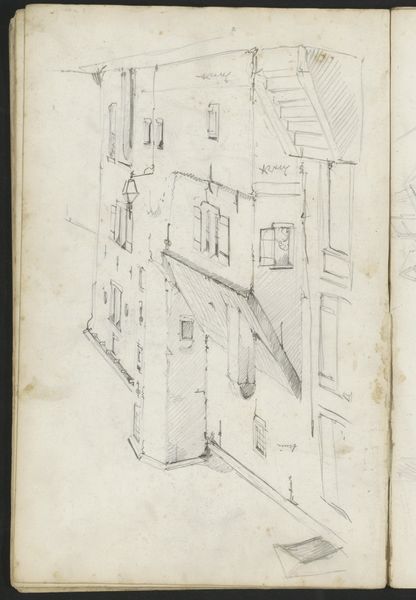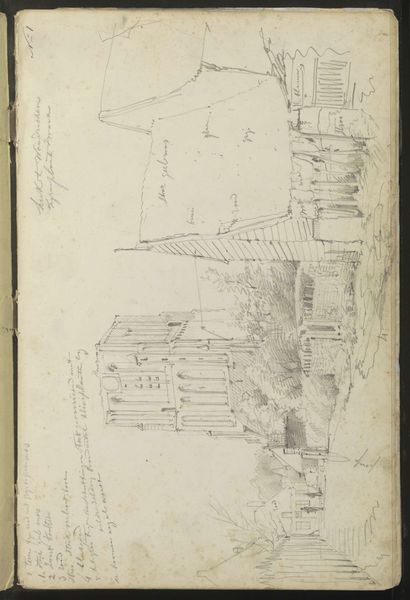
drawing, pencil
#
drawing
#
landscape
#
pencil
#
cityscape
#
street
#
realism
Copyright: Rijks Museum: Open Domain
Curator: This delicate pencil drawing, "Straat te Den Bosch", captures a street scene. Willem Koekkoek, the artist, sketched this impression somewhere between 1849 and 1895. Editor: Well, it definitely has an unfinished air about it. It feels… tentative, like a fleeting memory captured on paper. There’s something melancholic in its stark simplicity. Curator: Indeed, there’s a quiet, contemplative mood to it. It almost reads as an architectural plan rather than a picturesque scene. The medium itself, the humble pencil, emphasizes the raw immediacy of the artist's observation. Editor: And yet that rawness, as you call it, speaks volumes about production. Look at the various window styles—each would have demanded different skillsets from builders, indicating social stratifications along this street. It’s all meticulously rendered by Koekkoek! Curator: You make an important point. While seemingly simple, it’s a window into the built environment and possibly even the society of that era. The detail, especially on the windows as you note, suggests that Koekkoek found profound inspiration in realism as a way to interpret what he sees. Editor: Inspiration is one thing. I'm focused on his choice of pencil for mass production—drawings replicated into prints or pattern books, all informing a consumer market's tastes. Koekkoek, regardless of artistic intention, is also documenting labour, skill, consumption. Curator: Fair point. So, not only is Koekkoek capturing a physical place in Den Bosch, but potentially an idea of craft and industrial possibilities during a specific time period. Editor: Precisely. By documenting and disseminating designs—or even inspiring them—he inevitably connects the fine arts to daily lives of both tradesmen and citizens. Curator: It's rather intriguing how much social weight we've unearthed from what seemed initially to be an innocent cityscape sketch. A city block turned microcosm! Editor: That's always how to approach images like these, for me: the most unassuming artifacts speak volumes when interrogated about labor, value, and aspiration.
Comments
No comments
Be the first to comment and join the conversation on the ultimate creative platform.

